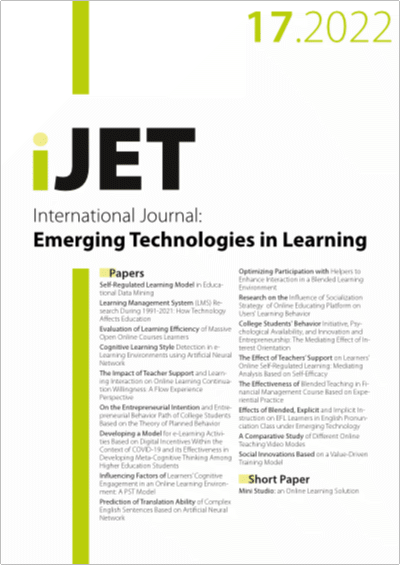A Comparative Study of Different Online Teaching Video Modes
DOI:
https://doi.org/10.3991/ijet.v17i17.29353Keywords:
online education, video mode, teaching material, learning effectAbstract
In order to study the influence of different modes of online educational videos as teaching materials on learners' learning effect, 60 college students were invited to conduct an experiment. On the experimental materials, traditional and automatic video recording and playing, which account for a large proportion of online education, were selected. The process of watching was recorded by eye tracker experiment, and the learning differences were reflected by subjective evaluation and objective indicators. It was found that compared with the automatic video, the traditional video was more attractive to the subjects, the subjects had more concentration, but the cognitive load was higher, and there was no significant difference between the two groups in terms of performance. In addition, the attention distribution of learners in different modes is mainly illustrated, followed by portrait and subtitles. In the two modes of pictures and text, pictures are the main mode. The above research can provide a scientific basis for video designers to select appropriate modes to highlight key information, help teachers and learners to choose more reasonable learning videos from a large number of educational videos, and help online education providers to improve learners' intuitive experience of videos and enhance their competitiveness.
Downloads
Published
How to Cite
Issue
Section
License
Copyright (c) 2022 Qiuhao Wu, Rong Liu

This work is licensed under a Creative Commons Attribution 4.0 International License.



